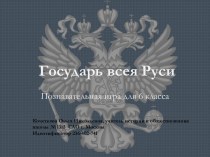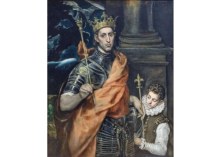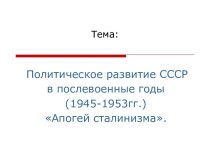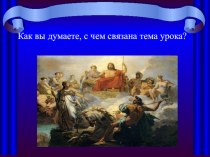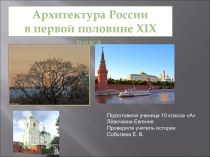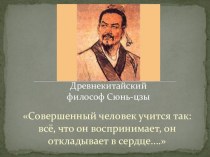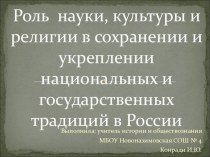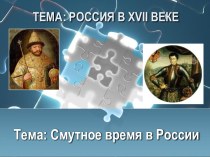- Главная
- Разное
- Бизнес и предпринимательство
- Образование
- Развлечения
- Государство
- Спорт
- Графика
- Культурология
- Еда и кулинария
- Лингвистика
- Религиоведение
- Черчение
- Физкультура
- ИЗО
- Психология
- Социология
- Английский язык
- Астрономия
- Алгебра
- Биология
- География
- Геометрия
- Детские презентации
- Информатика
- История
- Литература
- Маркетинг
- Математика
- Медицина
- Менеджмент
- Музыка
- МХК
- Немецкий язык
- ОБЖ
- Обществознание
- Окружающий мир
- Педагогика
- Русский язык
- Технология
- Физика
- Философия
- Химия
- Шаблоны, картинки для презентаций
- Экология
- Экономика
- Юриспруденция
Что такое findslide.org?
FindSlide.org - это сайт презентаций, докладов, шаблонов в формате PowerPoint.
Обратная связь
Email: Нажмите что бы посмотреть
Презентация на тему Creation of “Turk eli”
Содержание
- 2. KNOWING TURKS…The first known mention of the
- 3. The version based on the early analysis
- 4. FROM THE BEGINNINGformed in the west of
- 5. WHY THEY ACCEPTED?Why Turks accepted IslamThere are
- 6. A CHINESE ILLUSTRATION DEPICTING THE BATTLE OF
- 7. FIRST MUSLIM TURKIC RULERS The first
- 8. TURKIC ”NATION”Ethnogenesis, history, culture and spirituality of all
- 9. ANCIENT WRITINGS ABOUT CREATION OF “EL”
- 10. EACH OF THEM The formation of future khanates and empire of Turks,where they were located.
- 11. There is some cartography inventions which was
- 12. PROVE IS HEREThe latest historical and Turkological
- 13. Скачать презентацию
- 14. Похожие презентации
KNOWING TURKS…The first known mention of the ethnonym türk (another Turkic: Türük or ??? ???? Kök Türük or ???? Türük, whale 突厥, Old Tibetan: duruggu / durgu, pinyin: Tūjué, Wed-whale: tʰuot-küot, Wed-Greek. Τούρκοις) refers to the













Слайд 3 The version based on the early analysis of
the ethnonym at the beginning of the 20th century
by the Danish Turkologist and President of the Danish Royal Scientific Society Wilhelm Thomsen suggests the origin of the term from the word "toruk" or "turuk" that from most Turkic languages can be translated as "standing straight" or " strong "," steady ". At the same time, a prominent Soviet Turkologist acad. Barthold criticized this hypothesis of Thomsen and, on the basis of a detailed analysis of the texts of the Turks, he concluded that the term "tour" (established, lawful) was more likely to originate and that the people who are under the rule of the Turkic kagan - "the Turkic future" - that is, "The people governed by me"
Слайд 4
FROM THE BEGINNING
formed in the west of the
Volga, in the III-II millennium BC. During the centuries-old
migrations in the eastern and southern directions, it became the predominant population of the Volga and Kazakhstan, the Altai and the Upper Yenisei valleys. The ethnic history of these tribes is associated with the formation of Indo-European languages and the Caucasian-type race type.appeared in the steppes east of the Yenisei later, had an intra-Asiatic origin. In their milieu the Turkic languages and the Mongoloid racial type prevailed.
Слайд 5
WHY THEY ACCEPTED?
Why Turks accepted Islam
There are reasons
why Turkic people were guided to Islam.
1- Religious reason: Most
Turkic people belonged to the Kök Tengri (Tengrism) religion. Their belief system and lifestyle were somewhat close to those in Islam. They used to believe in the existence of a single creator god, the existence of a Satan figure, the afterlife, the immortality of the soul and heaven and hell. Wrong doings such as adultery, theft, torture, killing and lying were also forbidden. Sacrificing animals, prostration and polygamy were common among the Turkic peoples as well. And lastly, the concept of jihad in Islam used to fit in a way with the warrior characteristics of the Turkic cultures.2- Economic reason: After the conquest of Turkestan, economic relations began between the local people and Muslims. The intimate relations between them created an opportunity for Turkic people to get to know the religion. Hence, Islam first began to spread among merchants in the cities. Turkic people living in the north and the east started to adopt the religion of their fellow nation with whom they spoke the same language and conducted commerce.
3- Social reason: The Muslims' honesty in commerce and the importance they gave to justice and ethics positively affected the people Muslims met through their commercial and neighborhood ties. The locals of neighboring areas understood that the social ethics of the Muslim tradesmen who came to do business with them was a result of their religion. For example, their style of measuring fabric -measuring loose when selling, but tight when buying - mesmerized the locals. They started to question whether Muslims were humans or angels.
4- Political and military reason:Umayyad and Abbasid caliphs based their militaries on the Turkic style, and recruited Turkic men and established garrison cities such as Samarra for these Turkic troops. With their superior ability to fight, the Turkic people were promoted to high ranks in the army. They were also assigned to positions concerning state governance. Hence, the army and the administrative services were conducted mostly by these Turkic people, which resulted in Turkic communities feeling closer to Islam. British historian Sir Thomas Arnold, in his book "The Preaching of Islam: A History of the Propagation of the Muslim Faith", gives a detailed explanation of why people from different cultures and ethnicities willingly accepted Islam.
Слайд 6 A CHINESE ILLUSTRATION DEPICTING THE BATTLE OF TALAS
DURING WHICH ARABS FACED CHINESE FORCES. THE BATTLE IS
ALSO CONSIDERED A MILESTONE AS IT LED TURKS TO ACCEPT ISLAM AS THEIR NEW RELIGION.
Слайд 7
FIRST MUSLIM TURKIC RULERS
The first Turkic rulers to
convert to Islam were the princes of the city
states located in Sogdiana. Prince Tarkhan Nizak, who converted to Islam in 704, preserved the throne and attended the Qutaiba campaign. The Bulgar tribe living by the Volga River adopted Islam in the same era. Inheriting power in 920, Bulgar leader Yiltawar Almish Khan accepted Islam and changed his name to Jafar. Jafar was also the name of the then Abbasid caliph. Those Bulgars are possibly the ancestors of today's Kazan, or Volga Tatars.Sultan Satuq Bughra Khan, the ruler of the Karakhanids, was the first Muslim Turkic ruler who gained fame. Even if he was not the first Muslim Turkic ruler, he was the first Muslim Turkic emperor with the title khan, which means lord. His encounter with Islam took place before the age of 25 while he was still Atush governor via his relations with Muslim merchants. Their social ethics affected him. It was narrated that he saw the Prophet Muhammad in a dream saying: "Isn't it time to become a Muslim?" After having the dream, he immediately adopted Islam and took the name Abd al-Karim. Becoming khan in 924, his acceptance of Islam resulted in thousands of nomadic communities adopting Islam as their new religion as well to some degree.
Слайд 8
TURKIC ”NATION”
Ethnogenesis, history, culture and spirituality of all the
Turkic peoples, including Kazakhs are depicted in Old Turkic Orkhon
monuments. Knowing these values in the era of global associations, social cataclysm, the leveling of national cultures and languages today is in need and demand more than ever. These written records fully reflect the spiritual representation of Turks, their understanding of time environment, quantity, and more important for the analyst, show a network of social relations — the problem of power and control in Turkic Khanate, the restorate of the heroic figures of the Turkic world, reveals the issues of peace and war relationships with sister tribes and enemies.Слайд 11 There is some cartography inventions which was written
by Turks themselves and also this proves Islamic influence
on creation of Turks as a “el”
Слайд 12
PROVE IS HERE
The latest historical and Turkological literature
proves that the ancient Turks had indeed a powerful state,
(the eternal el), which was able to resist the Chinese empire, which was reckoned with many medieval states such as the Byzantine, Arab Caliphate, Sogdian state.Special system of government and public administration existed in the ancient Turc state, and the state itself was divided into three parts: the center (Ward), right wing (Tardush), left wing (Toles). The supreme power belonged to the kahan, and according to the law of turks inherited not from father to son, but from brother to brother. The hierarchy of socio-political relations existed as it was in any other state: Hagan (Khan), Turkic people, Shad, apa-tarhany, military chief (buyruks), heroes of war (er), and captive slaves.







